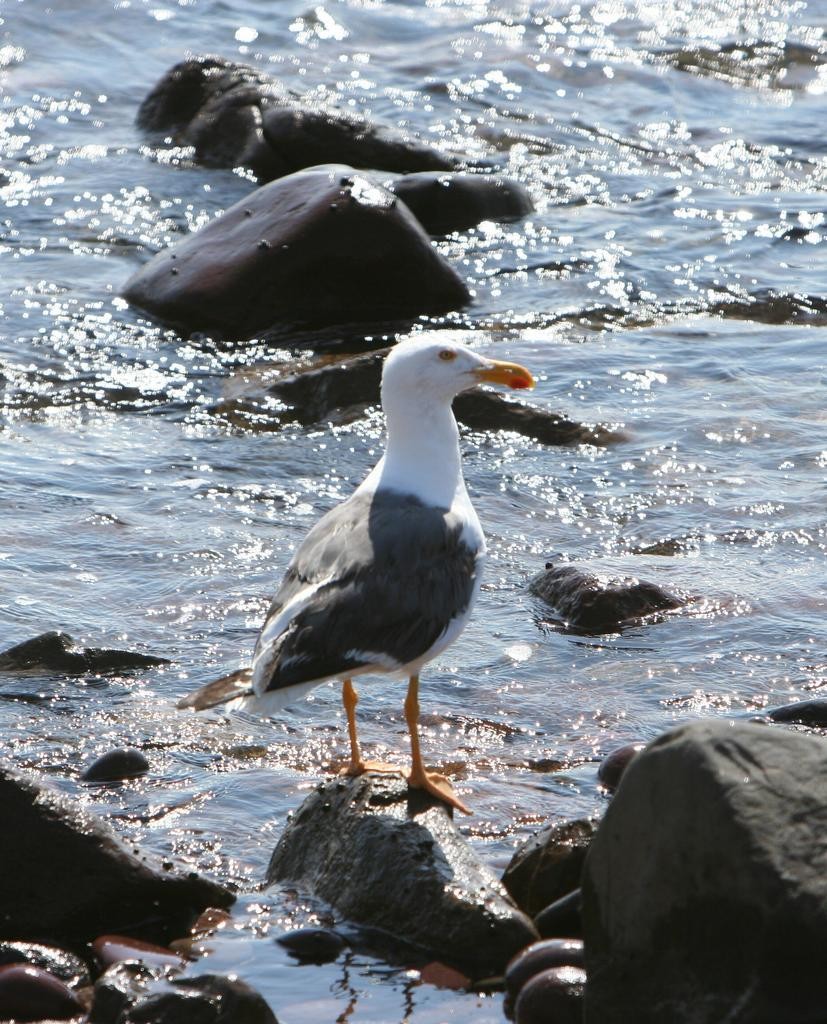Yellow-footed Gull
A species of Gulls Scientific name : Larus livens Genus : Gulls
Yellow-footed Gull, A species of Gulls
Botanical name: Larus livens
Genus: Gulls
Content
Description General Info
 Photo By Steve Ryan , used under CC-BY-SA-2.0 /Cropped and compressed from original
Photo By Steve Ryan , used under CC-BY-SA-2.0 /Cropped and compressed from original Description
Adults are similar in appearance to the western gull with a white head, dark, slate-colored back and wings, and a thick yellow bill. Its legs are yellow, though first winter birds do display pink legs like those of the western gull. It attains full plumage at three years of age. This species is tied with slaty-backed gull for the world's fourth-largest gull species and is one of the largest gulls in the world, being slightly larger than the western gull. It measures 53 to 72 cm (21 to 28 in) in length and spans 140 to 160 cm (55 to 63 in) across the wings. The body mass of this species can vary from 930 to 1,500 g (2.05 to 3.31 lb). Among standard measurements, the wing chord is 40 to 46 cm (16 to 18 in), the bill is 5.0 to 6.2 cm (2.0 to 2.4 in) and the tarsus is 5.9 to 7.5 cm (2.3 to 3.0 in). 
Size
69 cm (27 in)
Life Expectancy
34 years
Nest Placement
Ground
Feeding Habits
Yellow-footed Gull, a versatile forager, primarily consumes fish and various marine creatures. It exhibits opportunistic feeding behaviors, often scavenging or hunting, with unique adaptations for exploiting coastal food sources.
Habitat
Sandy and rocky coasts or islands, often with little vegetation 
Nest Behavior
The timing of yellow-footed Gull's nest building is not well documented, but they lay eggs in colonies, defending narrow territories from the nest to the water. Parental care patterns are likely similar to those of the Western Gull.
Nest Characteristics
Yellow-footed Gull typically nests in a line along beaches just above the highest tides or at cliff bases, slightly above the high-tide line. Their nests are shallow depressions lined with seaweed, grass, or other materials.
Dite type
Scavenger
General Info
Feeding Habits
Bird food type
Behavior
The birds are scavengers as well as foragers, feeding on small fish and invertebrates, carcases of marine mammals and offal, and preying upon seabird chicks and eggs (including pelican eggs). They sometimes scavenge around waste dumps and docks for refuse but seldom fly far inland. Yellow-footed gulls nest on the beach, a few metres above the upper limits of the highest tides. A pair of birds defends a small territory between the nest and the sea. The nest is a scrape in the sand with a meagre lining of seaweed or dry plant material. Usually, three eggs are laid, olive or buff in color with dark blotches, and incubation is probably done by both parents. The young are fully fledged and leave the nest when they are about seven weeks old. 
Distribution Area
Yellow-footed gulls are native to the Gulf of California in Mexico. Most are non-migratory, but an increasing number have been traveling to California's Salton Sea and southwards to Sonora during nonbreeding periods. Their breeding habitat is the Gulf of California, where they nest, in April, either independently or in colonies. They are found on sandy and rocky coasts or islands, often with little vegetation. 
Species Status
Not globally threatened.